Metagenomics is transforming healthcare by analyzing all genetic material in a sample, offering faster and more accurate insights into microbial communities and their impact on health. Unlike traditional methods, it identifies multiple organisms simultaneously, even those that can’t be cultured, in as little as 12–48 hours. Here’s why it’s a game-changer:
- Faster Diagnostics: Results in hours instead of days or weeks.
- Broader Detection: Identifies rare and novel pathogens.
- Personalized Treatments: Tailors therapies to individual microbiomes.
- Antibiotic Resistance Insights: Detects resistance mechanisms to guide treatment.
Quick Comparison: Traditional vs. Metagenomic Approaches
| Feature | Traditional Methods | Metagenomics |
|---|---|---|
| Sample Processing | Requires culturing | Direct DNA extraction |
| Detection Scope | Single organism | Entire communities |
| Time | Days to weeks | 12–48 hours |
| Accuracy | Limited by biases | Unbiased detection |
Metagenomics is already saving lives by diagnosing infections missed by traditional tests, combating antibiotic resistance, and paving the way for personalized healthcare. However, challenges like cost, regulatory hurdles, and data interpretation remain. With advancements in AI and sequencing technologies, its potential continues to grow.
Medical Applications of Metagenomics
Improved Disease Detection
Metagenomic next-generation sequencing (mNGS) has transformed how pathogens are identified in clinical settings. Unlike traditional methods that target one pathogen at a time, mNGS examines all genetic material in a sample simultaneously. This approach delivers results within 48 hours, and automated systems can reduce the timeframe to just 12–24 hours. At UCSF's Clinical Microbiology Laboratory, between 2016 and 2023, nearly 5,000 cerebrospinal fluid samples were tested with mNGS. Among the 14.4% of samples with confirmed infections, pathogens were identified with an accuracy rate of 86%.
Dr. Steve Miller, Chief Medical Officer of Delve Bio, highlights the importance of mNGS:
"mNGS offers the single most unbiased, complete and definitive tool for pathogen detection. Thanks to its ability to quickly diagnose an infection, mNGS helps guide management decisions and treatment for patients with meningitis and encephalitis, potentially reducing healthcare costs down the line."
Custom Treatment Options
Metagenomics allows healthcare providers to tailor treatment plans based on a patient’s unique microbiome profile. For example, it has revealed microbes and genes associated with conditions like Parkinson's disease. In one study involving 4,198 individuals, researchers found that medications influenced gut microbiome composition differently. These findings could help predict how effective a drug might be for a specific patient or identify potential side effects based on their microbiome.
This personalized approach extends beyond individual treatments, offering insights into broader healthcare challenges.
Fighting Antibiotic Resistance
Metagenomics plays a key role in combating antibiotic resistance by uncovering resistance mechanisms through both sequence- and function-based methods [1]. Unlike traditional approaches, it doesn’t require isolating individual organisms, providing a more complete picture of resistance patterns within microbial communities. This information not only helps guide immediate treatment but also shapes long-term strategies to combat resistance.
Four main antibiotic resistance mechanisms have been identified through metagenomic analysis:
| Resistance Mechanism | Description |
|---|---|
| Enzymatic Modification | Breakdown or alteration of the antibiotic |
| Target Alteration | Reduced ability of the antibiotic to bind |
| Metabolic Adaptation | Changes in pathways to bypass antibiotic effects |
| Reduced Accumulation | Lower concentration of antibiotics inside cells |
Metagenomics: Benefits and Challenges
While metagenomics has shown promise, it’s not without challenges. A study conducted at the First Affiliated Hospital of Soochow University highlights both its strengths and limitations [2]:
| Aspect | Performance Metrics |
|---|---|
| Sensitivity | 98.8% detection rate |
| Specificity | 38.5% precise identification |
| Overall Accuracy | 87.1% diagnostic accuracy |
| Time to Results | 12–24 hours (automated systems) |
| Coverage | Detects bacteria, viruses, and fungi |
These findings underscore the potential of metagenomics while pointing to areas where further refinement is needed.
sbb-itb-55c436e
Looking Ahead: Possibilities and Limits
New Developments
Metagenomic tools are transforming healthcare at an impressive pace. For instance, Nanopore Technologies offers real-time pathogen detection in just minutes and bacterial profiling within six hours. This capability is particularly impactful for low- and middle-income countries, where fast diagnostics can save lives [3].
A notable example of this technology in action comes from 2014, when UCSF used metagenomic next-generation sequencing (mNGS) to diagnose neuro-leptospirosis in a 14-year-old with meningoencephalitis. This case highlights how rapid sequencing can lead to precise, targeted treatments [3].
Artificial intelligence is also playing a growing role in metagenomic analysis. Deep learning techniques are advancing several key areas:
| Application | Current Capabilities | Future Potential |
|---|---|---|
| Pathogen Detection | Real-time identification in minutes | Improved accuracy for complex infections |
| Sequence Classification | Better strain identification | Discovery of new pathogens |
| Disease Prediction | Early warning systems | Preventive care strategies |
| Patient Stratification | Personalized treatment plans | Optimized therapeutic outcomes |
While these advancements are promising, there are still obstacles to overcome before these tools can be widely adopted in clinical settings.
Key Limitations
Despite the progress, metagenomics faces several challenges that need to be addressed. As Roy, Prifti, Belda, and Zucker explain:
"DL-based techniques complement existing methods and open new avenues in microbiome research. They are capable of tackling a wide range of tasks, from identifying unknown pathogens to predicting disease based on a patient's unique microbiome and will therefore play a central role in metagenomic analysis." [4]
However, current barriers include:
| Challenge | Impact | Potential Solution |
|---|---|---|
| Analytical Sensitivity | Results may lack reliability | Standardized validation protocols |
| Cost | $100s–$1000s per sample | Scaling and improving technology |
| Turnaround Time | Standard sequencing takes >18 hours | Faster sequencing platforms |
| Data Interpretation | Requires specialized expertise | AI-driven analysis tools |
There's also a significant imbalance in research data. Around 71% of human metagenomic datasets come from Europe, North America, and Canada, which limits the global relevance of findings [4]. Broader data collection is essential to make these tools universally applicable.
Another hurdle is the lack of regulatory clarity. Currently, there are no FDA-approved shotgun metagenomic diagnostic tests or standardized guidelines [5]. To move forward, healthcare providers will need well-defined reference standards and robust database resources to ensure consistent quality and reliability in clinical applications [6].
Using Metagenomics for Health and Longevity
Gut Health and Life Expectancy
Research shows that individuals with distinct gut microbiomes, which begin to develop in mid-life (around ages 40–50), tend to enjoy better health and longer lives [7]. This unique microbiome profile is linked to specific blood metabolites, suggesting it plays a role in promoting healthy ageing.
Dr. Tomasz Wilmanski, a research scientist at ISB, elaborates:
"This uniqueness signature can predict patient survival in the latest decades of life... Interestingly, this uniqueness pattern appears to start in mid-life - 40–50 years old - and is associated with a clear blood metabolomic signature, suggesting that these microbiome changes may not simply be diagnostic of healthy ageing, but that they may also contribute directly to health as we age".
Additionally, studies highlight that individuals with less diverse gut microbiomes are more likely to rely on medications and face nearly double the mortality risk during study periods [7]. These findings pave the way for advanced health monitoring tools that track gut health as a key factor in longevity.
Health Testing and Monitoring
Metagenomics has led to practical tools for managing personal health through gut health monitoring. A thorough evaluation of gut health includes several important factors:
| Monitoring Aspect | Purpose | Impact on Longevity |
|---|---|---|
| Xenobiotic Metabolism | Tracks how environmental compounds are processed | Enhanced metabolism of these compounds has been observed in centenarians |
| Microbial Diversity | Assesses the variety within the gut ecosystem | Higher diversity is associated with better health outcomes in older individuals |
| Inflammatory Markers | Keeps tabs on gut-related inflammation | Imbalances in these markers may signal age-related health issues |
Advancements like ultra-deep metagenomic sequencing, achieving 51.1 Gb per sample, have uncovered new details about gut bacteria linked to longevity [8]. For example, centenarians often show reduced levels of butyrate-producing bacteria and increased levels of Escherichia coli, Desulfovibrio piger, and Methanobrevibacter smithii [8].
Decode Age: Personalized Longevity Solutions
Decode Age applies metagenomic insights to create tailored strategies for improving longevity. It combines cutting-edge analysis with targeted interventions:
-
Advanced Gut Microbiome Analysis
Decode Age offers detailed profiling of over 30 gut health features, identifying imbalances and areas for improvement. -
Personalized Intervention Strategies
Based on test results, we design customized plans that may include supplements, microbiome-specific dietary advice, and lifestyle changes to enhance gut health. -
Ongoing Monitoring and Adjustment
Our platform supports continuous tracking of gut health markers, allowing for real-time updates to maintain balance.
Studies emphasize that personalized care combined with regular monitoring can greatly influence health outcomes. A diet rich in fiber, fruits, vegetables, seeds, beans, and nuts - along with consistent exercise - supports gut health as we age [7]. When tailored to individual metagenomic profiles, these strategies can further boost their effectiveness in promoting long-term health and longevity.
Conclusion
Key Benefits Summary
Clinical metagenomics outperforms traditional methods in identifying microorganisms, with detection rates ranging from 56.25%–92.31%, compared to 27.27%–64.29% for conventional techniques. Notably, up to 60% of pulmonary infection cases were previously treated without clear evidence of the pathogen involved [9].
Here’s why metagenomics stands out:
- Faster Results: Get answers in just 48 hours, compared to the 3–5 days needed for conventional tests.
- Broader Detection: Identifies rare, novel, and multiple pathogens all at once.
- Antibiotic Resistance Insights: Pinpoints resistance genes to support better treatment choices.
- Cost-Effective Testing: With prices ranging from $500 to $2,200, it has the potential to lower overall treatment expenses.
With these benefits, metagenomic testing is becoming an essential tool in modern healthcare.
Next Steps in Healthcare
Bringing metagenomic testing into routine clinical use marks a major shift. For example, a UCSF study involving 204 patients showed it identified 13 infections that standard methods missed, directly impacting treatment decisions.
Key developments shaping its future include:
- AI Integration: Artificial intelligence is improving how microbiome data is analyzed, making results more precise and efficient.
- Broader Use Cases: Metagenomic sequencing is proving invaluable for diagnosing infections in high-risk groups, such as infants, the elderly, and those frequently hospitalized.
- Standardized Protocols: Leading institutions like UCSF are working to create consistent guidelines for reliable clinical implementation.
FAQs
What is metagenomics?
Metagenomics is the study of genetic material recovered directly from environmental samples, such as blood, stool, or bodily fluids, to identify microorganisms (bacteria, viruses, fungi, etc.) present in the sample. Unlike traditional microbiological methods that focus on culturing individual organisms, metagenomics provides a comprehensive analysis of the entire microbial community, offering a broader and more accurate detection of pathogens.
How does metagenomics differ from traditional microbiological testing?
Traditional methods typically require culturing microorganisms, which can be time-consuming and may miss organisms that are hard to culture. In contrast, metagenomics analyzes all genetic material in a sample simultaneously, allowing for faster results (within 12–48 hours) and detecting a wider range of pathogens, including those that cannot be cultured.
What are the key benefits of metagenomics in healthcare?
- Faster Diagnostics: Results are available in hours rather than days or weeks, enabling quicker treatment decisions.
- Broader Detection: Metagenomics can identify rare, novel, or previously undetected pathogens, even those that are difficult or impossible to culture.
- Personalized Treatments: Tailors therapy based on a patient’s unique microbiome, optimizing treatment effectiveness and minimizing side effects.
- Antibiotic Resistance Insights: Detects resistance genes in microbial communities, helping guide the use of appropriate antibiotics.
How does metagenomics help with antibiotic resistance?
Metagenomics can detect antibiotic resistance genes in microbial communities without needing to isolate individual organisms. This allows for a more comprehensive understanding of antibiotic resistance patterns and helps guide the use of the most appropriate treatment, improving patient outcomes and supporting efforts to combat global antibiotic resistance.
Can metagenomics help with health and longevity?
Yes, metagenomics has been linked to improved health and longevity, particularly through gut health monitoring. Studies suggest that a diverse and balanced gut microbiome plays a critical role in healthy ageing. Metagenomic analysis can identify microbiome imbalances and provide personalized strategies, such as dietary adjustments or supplements, to promote better long-term health.
What is the role of metagenomics in personalized medicine?
Metagenomics can provide personalized insights into a patient’s unique microbiome, enabling more targeted treatment strategies. By understanding how individual microbiomes interact with medications and diseases, healthcare providers can offer treatments that are better suited to a patient's specific genetic and microbial makeup.
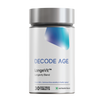
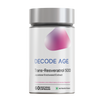
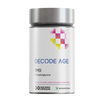
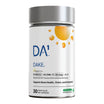

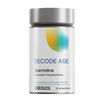
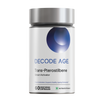
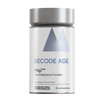
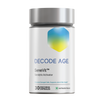
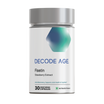
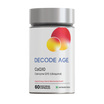


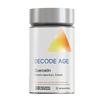
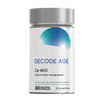
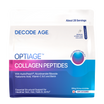
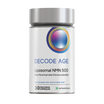
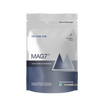











Leave a comment
All comments are moderated before being published.
This site is protected by hCaptcha and the hCaptcha Privacy Policy and Terms of Service apply.